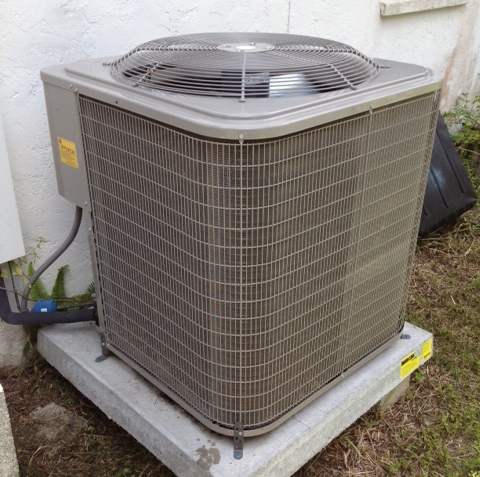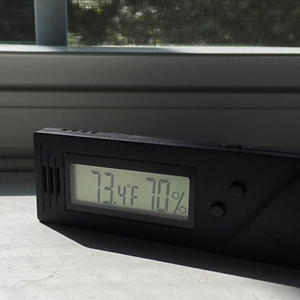
Image Credit: Chris Marriner
Florida is not the kind of place where you’d want to be without air conditioning for very long, so when Chris Marriner’s old system died last spring, he didn’t waste much time in replacing it. But what should have been a ticket to indoor comfort hasn’t exactly worked out that way.
Marriner’s HVAC technician decided to replace the 4-ton system with one of the same capacity, even though Marriner knew that because of improvements to the building envelope the new system probably would be oversized for the 2200-square-foot home. The tech told Marriner the system could be “tuned.”
In a Q&A post at GreenBuildingAdvisor, Marriner complains that indoor relative humidity averages 55% or more, and has ranged up to 66% or 67%.
That’s apparently because the oversized AC equipment doesn’t run long enough to lower indoor humidity. When Marriner spoke to the HVAC installer about the oversized equipment, he got some strange advice.
“I talked to him about it and he wants to bring some attic air into the return so [the AC] will run longer,” Marriner writes. “I think that adding a whole house dehumidifier, like the Williams Air Sponge, or Aprilaire would be the best solution. Any feedback?”
That’s the topic for this Q&A Spotlight.
HVAC tech’s idea is non-starter
Nathaniel G finds the suggestion to bring hot attic air into the system to extend the run time nothing more than an “inefficient Band-aid.” The system should have been sized correctly in the beginning.
“Sounds like your HVAC tech is less interested in doing his job properly than doing it the way grandpa did and upselling you on a bunch of crap to patch up his own mistakes when grandpa’s approach doesn’t cut the mustard,” Nathaniel says.
Weekly Newsletter
Get building science and energy efficiency advice, plus special offers, in your inbox.

This article is only available to GBA Prime Members
Sign up for a free trial and get instant access to this article as well as GBA’s complete library of premium articles and construction details.
Start Free TrialAlready a member? Log in















2 Comments
Two Speed Compressor and Variable Speed Indoor
I would consider a 16 SEER or better two stage compressor with a variable speed indoor unit that can provide mild weather humidity control and high performance cooling when needed with the right thermostat. A standalone dehumidifier is the second choice although I would not buy a central dehumidifier when the right AC system could be retrofitted at cost for similar dollars. Obviously complete air sealing is essential but difficult in typical Florida houses that were built with the idea that fiberglass is all one needs.
"Clean Room" comment.
The hygiene hypothesis that AJ is referring to in his clean room statement is just a correlation and does not show causation. It is not appropriate to suggest a healthy indoor Relative Humidity (RH) based on those studies. The factors that may be causative for the correlation are vast and not understood at this point.
Moderate Relative Humidity (between 40% and 60%) levels seems to provide the best overall health benefits http://www.ncbi.nlm.nih.gov/pmc/articles/PMC1474709/ This is likely due to only moderate survival rates of indoor airborne viruses. http://rsif.royalsocietypublishing.org/content/early/2009/09/17/rsif.2009.0227.focus.full Moderate RH also prevents the growth of fungi again resulting in lower fungal infection rates. Airborne bacteria and exposure levels are correlated to dust concentrations http://www.ncbi.nlm.nih.gov/pmc/articles/PMC3085396/ , http://rsif.royalsocietypublishing.org/content/early/2009/09/17/rsif.2009.0227.focus.full So things that reduce indoor dust (like a well filtered HVAC system) reduces exposure levels resulting in lower infection rates.
Log in or become a member to post a comment.
Sign up Log in